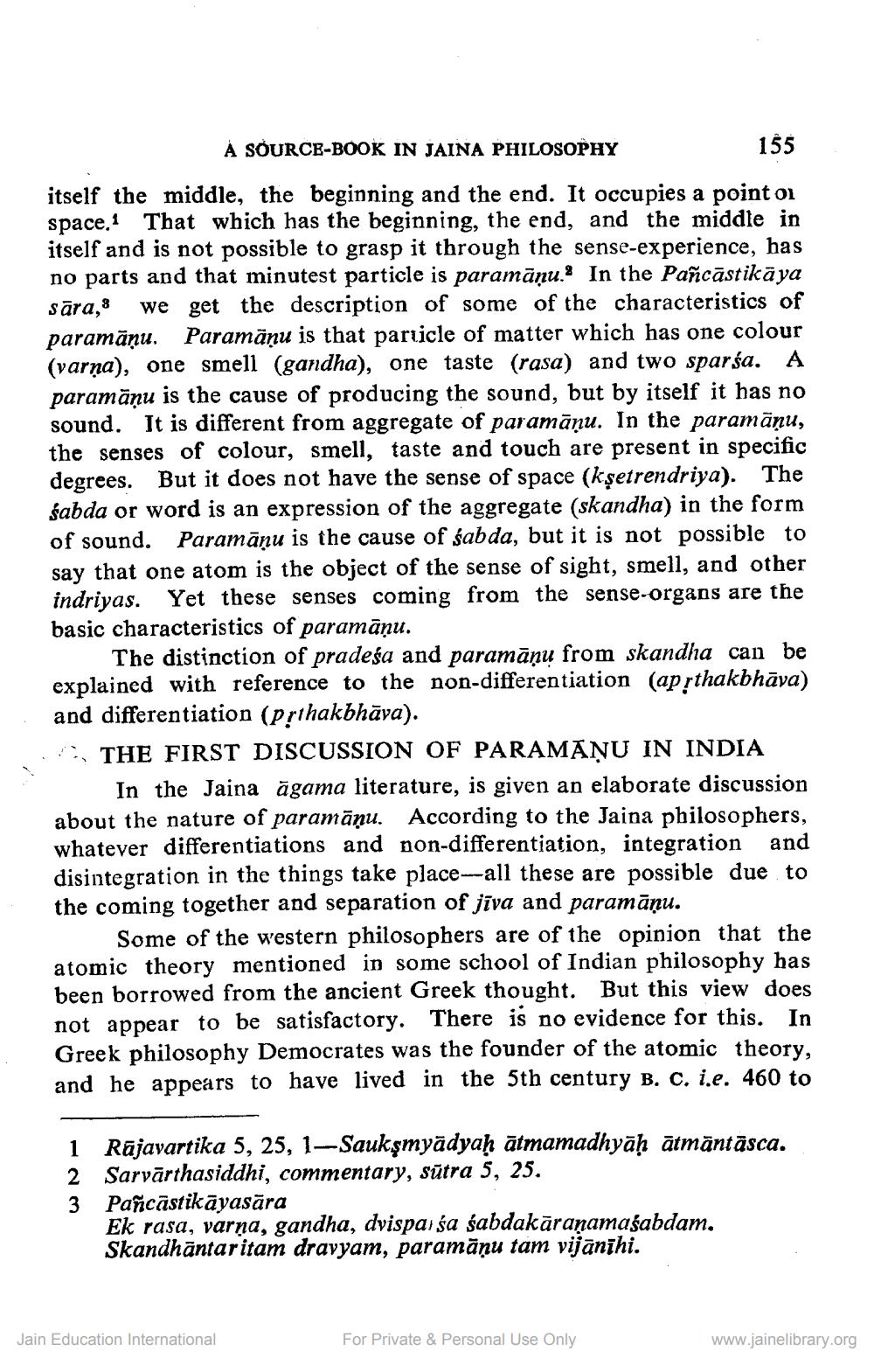________________
À SOURCE-BOOK IN JAINA PHILOSOPHY
155
filhlit.
itself the middle, the beginning and the end. It occupies a point oi space. That which has the beginning, the end, and the middle in itself and is not possible to grasp it through the sense-experience, has no parts and that minutest particle is paramāņu. In the Pañcāstikāya sāra,8 we get the description of some of the characteristics of paramāņu. Paramāņu is that particle of matter which has one colour (varna), one smell (gandha), one taste (rasa) and two sparśa. A paramāņu is the cause of producing the sound, but by itself it has no sound. It is different from aggregate of paramāņu. In the paramāņu, the senses of colour, smell, taste and touch are present in specific degrees. But it does not have the sense of space (kşetrendriya). The šabda or word is an expression of the aggregate (skandha) in the form of sound. Paramānu is the cause of sabda, but it is not possible to say that one atom is the object of the sense of sight, smell, and other indriyas. Yet these senses coming from the sense-organs are the basic characteristics of paramāņu.
The distinction of pradeśa and paramāņu from skandha can be explained with reference to the non-differentiation (aprthakbhāva) and differentiation (Prthakbhāva).
THE FIRST DISCUSSION OF PARAMAŅU IN INDIA
In the Jaina āgama literature, is given an elaborate discussion about the nature of paramāņu. According to the Jaina pbilosophers, whatever differentiations and non-differentiation, integration and disintegration in the things take place--all these are possible due to the coming together and separation of jīva and paramāņu.
Some of the western philosophers are of the opinion that the atomic theory mentioned in some school of Indian philosophy has been borrowed from the ancient Greek thought. But this view does not appear to be satisfactory. There is no evidence for this. In Greek philosophy Democrates was the founder of the atomic theory, and he appears to have lived in the 5th century B. c. i.e. 460 to
1 Rajavartika 5, 25, 1-Sauksmyādyah ātmamadhyāḥ ātmāntāsca. 2 Sarvārthasiddhi, commentary, Sūtra 5, 25. 3 Pañcāstikāyasāra
Ek rasa, varņa, gandha, dvispa śa śabdakāranamaśabdam. Skandhāntaritam dravyam, paramāņu tam vijānīhi.
Jain Education International
For Private & Personal Use Only
www.jainelibrary.org




